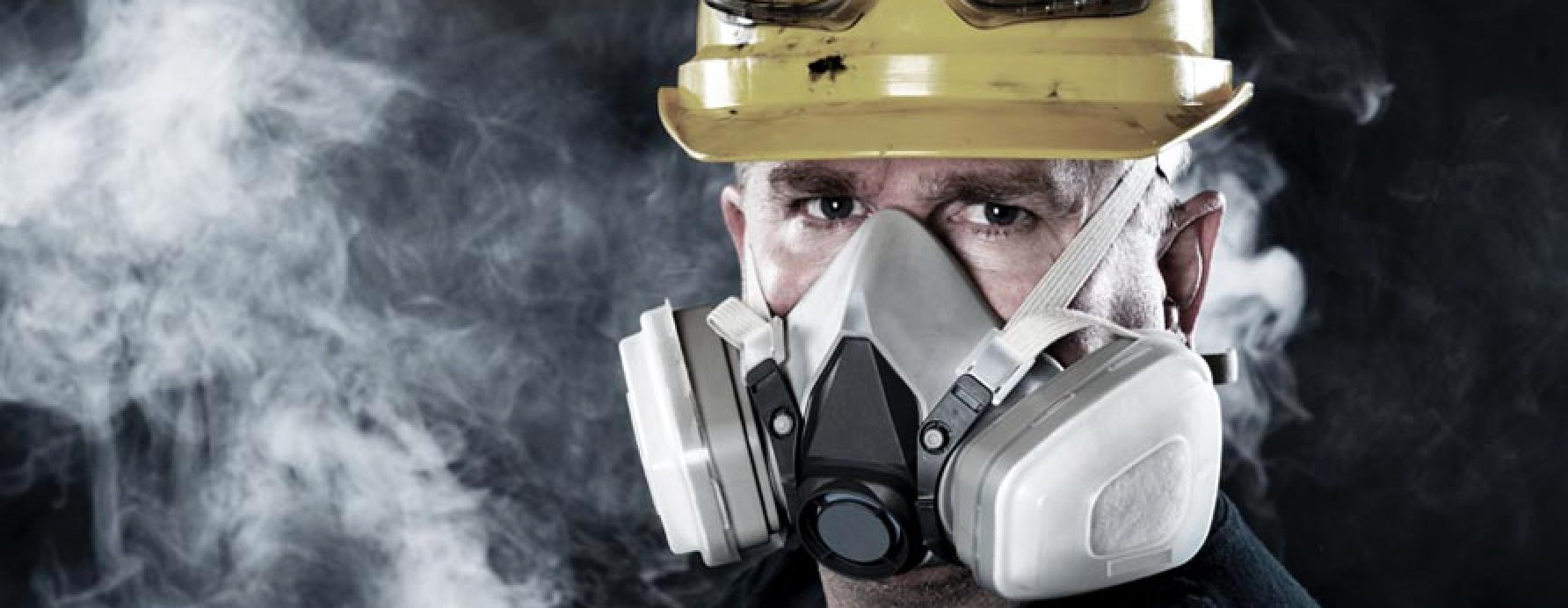
Inhaling silica dust can lead to serious, sometimes fatal illnesses. Silica in its crystalline form has recently been classed as a respiratory carcinogen as it causes occupational cancer.
What is silica?
Silica is one of the most common naturally occurring elements on the planet. Silica, the mineral compound silicon dioxide (SiO2), is found in two forms -- crystalline or noncrystalline (also referred to as amorphous).
Silica is commonly found in most rocks and sand, and in products such as bricks, concrete, ceramics, clay, glass, pottery and electronics.
Typical industries where exposure is likely to occur are cement manufacturing, glass / concrete mixing product manufacture, foundries, sand-blasting, manufacturing of abrasives, and many construction activities. In construction these materials create dust when they are cut, sanded, carved etc. Some of this dust may be fine enough to breathe deeply into your lungs.

What are the health effects?
Inhaling silica dust can lead to serious, sometimes fatal illnesses including silicosis, tuberculosis (in those with silicosis), and chronic obstructive pulmonary disease (COPD). Silica in its crystalline form has recently been classed as a respiratory carcinogen as it causes occupational cancer.
Respirable silica, which is the fine fraction of the dust (<2.5 microns) is too small to see with normal lighting. The amounts needed to cause ill health are not large, and are 100x less than the general dust exposure.
Silica related illness as a results of low concentration exposure can take up to 10 years to occur, but in circumstances where exposures are high symptoms can develop within a few weeks.

What are the legal exposure limits?
British occupational exposure limits (WEL’s) are set to help protect the health of workers. WEL’s are concentrations of hazardous substances in the air, averaged over a specified period of time.
Legal exposure limits have been set by the Health & Safety Executive for the following forms of silica:
In circumstances where work involves activities that lead to exposure to a carcinogen, all reasonable efforts must be made to reduce exposure to levels as low as possible regardless of the measured exposure in relation to the WEL.
Assessing the risk from this type of exposure should take into consideration the fact that any measurements obtained require a specific sampling and analysis technique (X-ray powder diffraction) different to general dust monitoring used for low toxicity dusts.
What actions do I need to take to meet the regulations?
Employers must comply with The Control of Substances Hazardous to Health Regulations 2002 and need to:

How should the effectiveness of controls be monitored?
Because of variations in plant, process, work and other conditions it is difficult to draw conclusions about long-term exposure patterns on the basis of a single measurement of exposure at one point in time.
Exposure monitoring should be carried out on at least an annual basis depending on the risk identified from your initial assessments. The frequency will vary and should depend on how close the measured exposure is to the workplace exposure limit, significant or highly significant exposure scenarios should be measured more frequently.
A regular monitoring program is required for the following reasons:
Employers must keep a record of monitoring carried out for at least 5 years, or for 40 years for personal exposures of identifiable employees.
Should I carry out personal or background monitoring?
Personal monitoring should always be the first choice!
Personal monitoring should be used to evaluate the risk of exposure to the individual worker. Air samples should be collected in the workers breathing zone by means of personal samplers. Sampling should be carried out while the work activity is in operation.
Where concentrations vary from one work operation or phase to another, personal sampling should be done in such a manner that the averages and in any case the maximum, level of exposure of each individual worker can be determined.
Exposure profiles of particular jobs or occupational categories should be constructed from the air-sampling data of different operations and from the workers' exposure time in these jobs.
If background monitoring is to be carried out it should only be used to determine the distribution of airborne substances throughout the general atmosphere of the working area and to identify problems and priorities. This form of sampling can not be used to compare exposures against legal exposure limits.
How Many Staff Should be Monitored?
Taking one or a few samples on one day will not provide you with sufficient information on which to base conclusions about long-term exposures. In reality the number of samples that you can take is usually constrained by the resources available to you. You need to use your judgement when deciding on sample size, especially when small groups are concerned.
For worst-case monitoring, as a rule of thumb, at least one employee in five needs to be monitored from a properly selected similar exposure group (SEG), unless a smaller number can be justified.
Contact Us for help with exposure control to RCS
Contact Us
Please fill in the short form below for any enquiries.
Search
Please fill in the short form below for any enquiries.